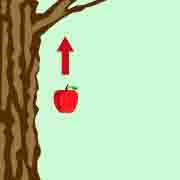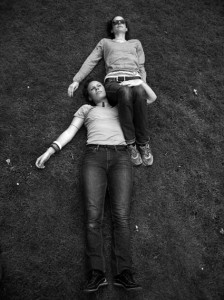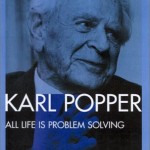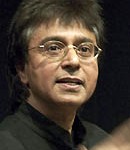Now let's talk about Arjens other article, "The Exercise of Interactive Art” by Joke Brouwer and Arjen…
Popper, Newton’s apple and dwarves on the shoulders of giants.
 Discussing the differences between artistic research and scientific research yesterday with Henk Slager, I decided to revisit Popper and the scientific method. As my college notes from the ’80 have disappeared, I checked the Internet for a good source. Found a very good summary of Popper’s book ‘The Logic of Scientific Discovery (New York: Harper & Row, 1968) on the Net, an article written in 1984 by Ralph E. Keynon Jr. Let me give the key characteristics of Karl Popper’s philosophy of science in my own words using Keynon’s article and my own training as a surveyor as references:
Discussing the differences between artistic research and scientific research yesterday with Henk Slager, I decided to revisit Popper and the scientific method. As my college notes from the ’80 have disappeared, I checked the Internet for a good source. Found a very good summary of Popper’s book ‘The Logic of Scientific Discovery (New York: Harper & Row, 1968) on the Net, an article written in 1984 by Ralph E. Keynon Jr. Let me give the key characteristics of Karl Popper’s philosophy of science in my own words using Keynon’s article and my own training as a surveyor as references:
1. Science postulates theories, for example the theory of gravity: objects with mass attract one another. In mathematical terms this theory is expressed as:
![]()
- F is the magnitude of the gravitational force between the two point masses,
- G is the gravitational constant (which is a given)
- m1 is the mass of the first point mass,
- m2 is the mass of the second point mass, and
- r is the distance between the two point masses
2. Based on this theory, we can make a prediction: An apple (the first point mass) will be attracted to the earth (the second point mass) by a force F that is dependant on the distance r between the apple and the earth. The further the apple is away from the earth, the smaller the force F will be: the apple in outer space will weigh less than an apple held in the hand.
3. Now a scientist does his or her level best to falsify this prediction: to prove that the apple does not weigh less when the apple is taken further and further from the earth. If a lot of experimenting does not prove the prediction to be false, the theory stands and is accepted as scientific fact until something comes along that falsifies the theory. So all scientific theories are considered true unless proven otherwise. Popper shows that we cannot prove that a theory is true, (or false, for that matter) but we can show that a prediction is true or false, namely by testing the prediction. This testing is called critical testing. If a theory that leads to valid (i.e. testable) predictions, and those predictions are tested often enough but never falsified, the theory is considered to be the closest thing to ‘the truth’ that we have.
4. It is not just any theory that can be tested this way. Critical testing only gives valid results if the theory that is tested is free from ‘looseness’. Poper gives four criteria, or levels of evaluation, that we can use to find out if a theory can be considered a ‘scientific theory’.
a. are the conclusions we come to (based on the theory) logical when compared among themselves;
b. is the theory empirical (can be tested by observation, experience or experiment) or tautological (can be talked about but not tested)
c. does the theory, when compared with other scientific theories, constitute an advance – does it add to scientific knowledge
d. does the theory lead to applications that can be tested in themselves
To give a causal explanation of an event means to deduce a statement which describes it, using a theory as a starting point and giving the initial conditions under which the event takes place. If the event is the apple’s falling from a tree, the starting point is the theory of gravity, the initial conditions are the apple growing on the tree and it’s being apple harvest time – i.e. the tree will let go of the apple when we shake the branch. Now the causal explanation for the apple’s falling from the tree is the explanation that this is caused by the force of gravity.
It is, by the way, also a mistake to think that falsified hypotheses are “false” as it is to think that the un-falsified theory is “true”. Popper himself was aware of this. Quote, page 50 of “The Logic …” : “but those who uphold it dogmatically [a system] . . . are adopting the very reverse of that critical attitude which in my view is the proper one for the scientist. In point of fact, no conclusive disproof of a theory can ever be produced; . . . If you insist on strict proof (or strict disproof) in the empirical sciences, you will never benefit from experience, and never learn from it how wrong you are.”
5. In the present-day scientific community there is added another criterion for a theory to be considered ‘valid’: the experimental results that a group of scientists publish are not considered valid until a different group of scientists, repeating the first groups critical testing, come to the same results. This we can call the criterion of reproducability.
6. In most area’s of science it is common to take more measurements than are actually needed to come to a conclusion. For example, a surveyor often finds herself in the postion that she has more data than absolutely needed to make a map of an area. She could simply throw the exess data away, but that goes against the scientific grain. So what she does is take all the data and make them all fit into the model (in this case: the map). The best fit between the map and the measurements is determined using the method of least squares, first described by Carl Friedrich Gauss in 1794. This method allows her to compute a margin of error for each of the maps’ elements, and to tweak these margins by leaving out some (but not all) of the exess data in order to make the best map possible given the set of data she collected.
This also allows her to communicate to other scientists how ‘good’ or ‘accurate’ her data is. Called regression analysis, this method is available in most statistical software packages and used widely in the sciences.
7. All scientific research adds to a scientific ‘body of knowledge’. Often expressed as: “we are dwarfs standing on the shoulders of giants”. Every living scientist profits by the work done before by other scientists, and can add his or her bit to a general body of knowledge that dates back over centuries. This has the great advantage that one can detect being in a cul-de-sac that other scientists have explored before, so there is advanced warning of a certain route not looking very viable.

The picture is “Standing on the Shoulders of Giants” from “Giant Monuments” (S. Mestrom with K. Newby, after Anatoli Osmolovsky), Munster, Germany, 2007
I’ve found a few loose ends in Popper’s theory:
1. The nature of language. Popper calls this ‘inter-subjectivity’. Calling a material object a ‘stone’ and another material object also a ‘stone’ classifies these objects as having things in common. In fact, classifying objects into named categories (“these are both stones”) means that we make assumptions about what the nature of the world is like. This can get in the way of the scientist, who is required to rethink the most simple and accepted ‘basic facts’: is a rose is a rose is a rose is a rose?
2. Observation, experience and experiment serve to falsify prediction and, by association, theory. Observation and experiment are executed by an observer, the experience is an observer’s experience. There is discussion about how neutral observers can be. There may be no such thing as a totally neutral observer – proven by the heated debate scientists have when disagreeing on the ’empiricallness’ of data. Empirical data may be coloured by expectations, world views, sex and nationality of the so-called neutral scientist.
So far, so good. Now to go on to the interesting question of what common ground there is, what bridges there are from the scientific research to the artistic research (and vice versa). To discuss this, I will need to research the ‘artistic research method’ more. A few questions that have already popped up:
1. Does the artist develop theories and produce predictions, i.e. does an artist’s research start with formulating expectations? Or is the artists process more intuitive, does the way get clear only after having been walked? My experience up till now suggests the second. My experience of scientific research is that this path is not always so clear-cut beforehand as we’re made to believe – the discovery of penicillin is a case in point.
2. If a scientists is after discursive knowledge, and an artist is after presentational knowledge, what subjects/theories/situations can and cannot be researched by an artist?
3. How does artistic research inform on other artistic research. Does artistic research generate a ‘body of knowledge’ and if so, how? where? how accessed and accessible? How to avoid cul-de-sacs that other artists have explored and found leading nowhere before?
4. Does artistic research have to have an internal logic?
5. Can artistic research be evaluated in terms of ‘does it constitute an advance’ or ‘how does it compare to other research’?
6. Given a set of initial conditions (the artist, her background, her interests, a given situation), can causality be applied? In other words, will the initial conditions inevitably lead to a certain outcome, or are many different outcomes possible. What role for the element of chance? My experience in the art world suggests: a large role.
7. No artist will want to reproduce another artist’s work. So: no criterion of reproducability. Also: no critical testing? Also: no regression analysis, no indication of how ‘valid’ the artist’s results are? If this is true, how will the world of science ever take the results of artistic research seriously?
8. And vice versa: if scientific theory is expressed in the language of mathematics, and critical testing is represented as numbers, how will the world of the artists ever take the result of scientific research seriously?
9. I have found examples of artists can bringing creativity and inspiration to the formulating of scientific theories, artists investigating and questioning the tenets of the scientific faith (see my blog on Irene Koppelman’s work, for instance). No examples of artists involved in the critical testing itself. Would this be possible?
10. To me, the role of the artist in scientific research projects seems a role uncomfortably close to that of a court jester; who is able to formulate and articulate difficult questions no-one else thinks of or is in a position to ask; but can at any point be dismissed as being ‘funny’.
11. What role for scientists in artistic research projects?
10. Is it enough to postulate that scientific research and artistic research are just ‘different’ – and leave it at that?
More than enoug questions. So: to be continued.
| « Bien étonnés de se trouver ensemble | <-- previous post | next post --> | A sticky gnome and good/bad art criteria » |
|---|








